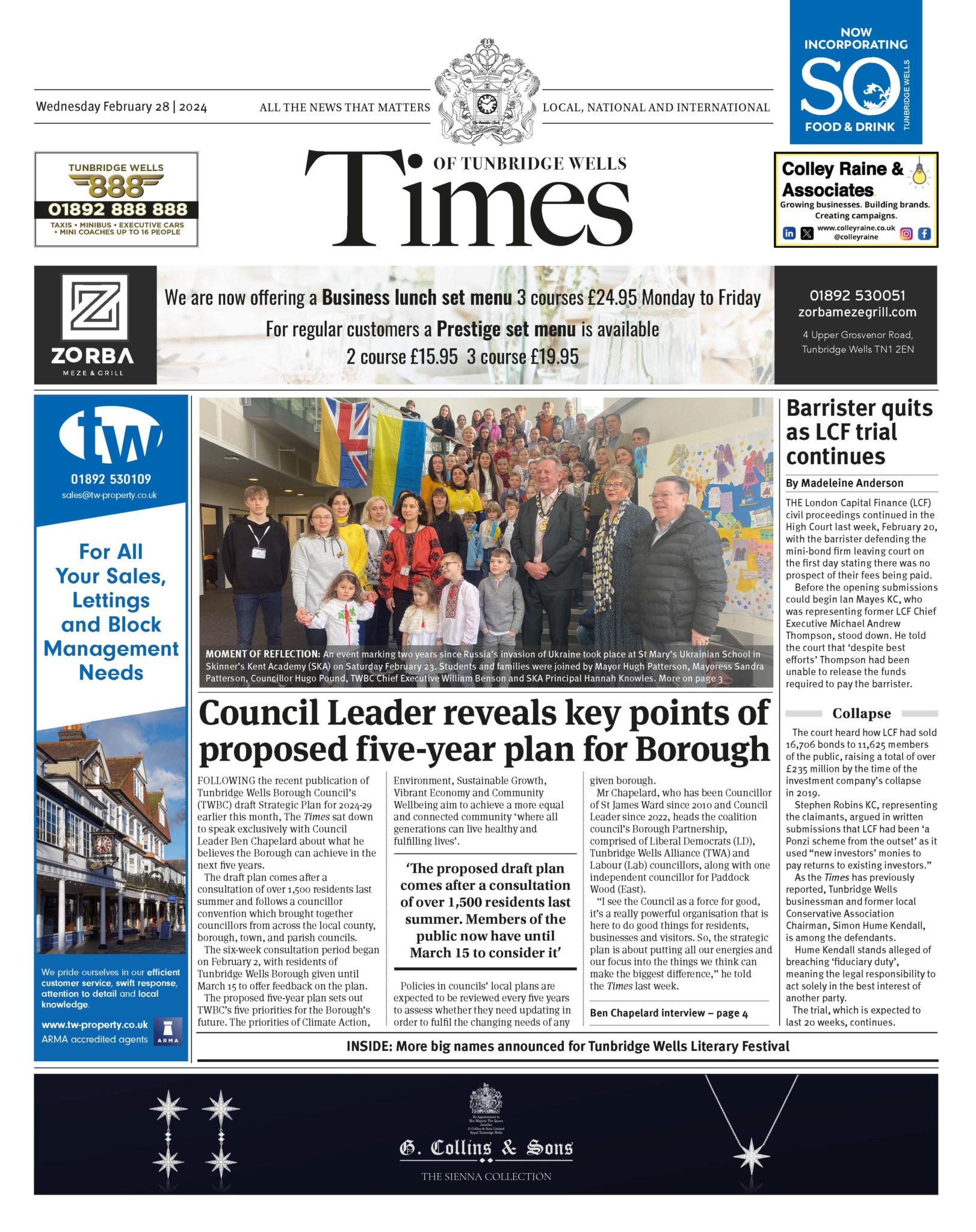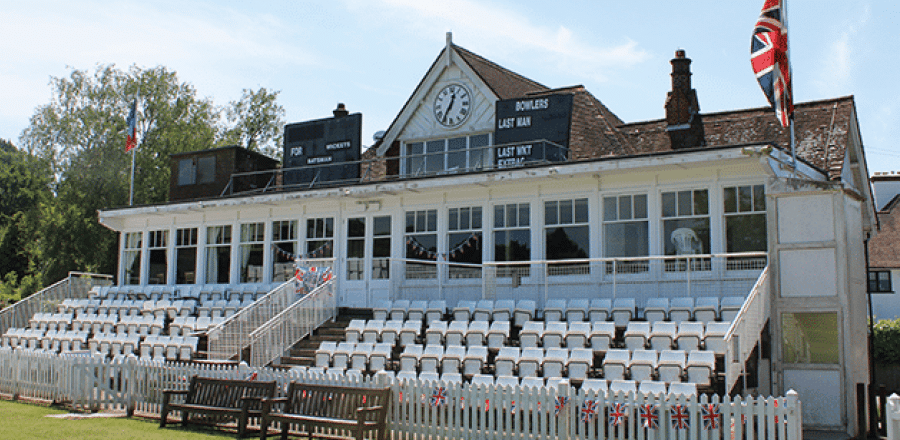The site, which is a mile from the edge of Tonbridge, has been earmarked for the massive development known as a ‘garden town’ as part of the TWBC draft Local Plan.
The picturesque rural location on Green Belt land – which is designed to act as a buffer between urban areas – has a population of around 100 but that would rise to 5,000.
A further 4,000 homes have been allocated to nearby Paddock Wood – both sites are less than a mile from the border with the borough of Tonbridge & Malling.
The draft Local plan, which is currently subject to a six-week consultation period that ends on November 1, stipulates the building of 13,560 homes up to 2036.
So these two sites would provide half of the total housing quota within a five-mile stretch of minor road, the B2017, which is due to be upgraded.
An extraordinary meeting of the Tonbridge & Malling Borough Council [TMBC] Planning and Transportation Advisory Board was held at Kings Hill on October 2 to discuss how it responds to the proposals.
Eighteen councillors addressed the meeting, which was attended by around 90 members of the public, many of them Tudeley residents.
Afterwards the Leader, Cllr Nicolas Heslop, said it would be better to bring TMBC’s response back and put it to Cabinet for full approval.
Diane Huntingford, chair of the Tonbridge Civic Society, has written an open letter to TWBC opposing the plan ‘very strongly on environmental, amenity and infrastructure grounds’.
She says: “It is environmentally irresponsible to build what is in effect a new small town in an area with no existing public transport, a town whose 5,000 or so inhabitants will be dependent on cars to go anywhere.”
She justifies the outspoken attack on a neighbouring authority by saying that the society is ‘the largest amenity society in Tonbridge with almost 500 members’.
The proposals include a new secondary school and a primary. But there would be no train station – even though, according to the plans, there would be a railway line running through the middle of the school.
The Society says the impact on the road and rail network in Tonbridge would be ‘severe’, given the high number of schools in the south of the town already.
Mrs Huntingford said: “The town has significant traffic problems at peak times because of the concentration of schools and the presence of one of the busiest commuter railway stations in south-east England.”
TMBC’s own Local Plan, which has already been submitted to the Planning Inspector, includes 480 new homes on Green Belt land next to Haysden Country Park in south Tonbridge.
“Tonbridge already has one of the highest concentrations of secondary schools of any town of its size in England,” said Mrs Huntingford.
“It will be a major traffic-generator, drawing yet more people from the east and south-east of the town towards Tonbridge.”
She says any new school should be built at Paddock Wood or Pembury, and identifies a ‘large tract of unbuilt land’ on the north-eastern edge of Tunbridge Wells between Pembury Road and the A21 for the development.
This would ‘offer easy access to the centre of Tunbridge Wells, including its railway station, and to the railway station at High Brooms, both of which are much less busy than that at Tonbridge’.
In his summary of the extraordinary meeting, Cllr Heslop noted the unintended consequences of the A21 dualling – the bypass widening between south Tonbridge and North Farm industrial estate, which was completed two years ago.
This had already resulted in heavy traffic flowing into the town at an ‘alarming’ rate without providing any economic benefit by stopping there.
He added that the implications of the proposed new business park at Longfield Road and the draw of Tonbridge station compared to those in Tunbridge Wells and Paddock Wood were huge.
Green Party councillor Mark Hood, who called the proposal ‘shocking’, asked how children were supposed to get to school since it was a 40-minute walk from Tonbridge station.
Cllr Jill Anderson, the borough’s Mayor, said: “I am so angry, I can scarcely speak’, adding that she ‘learned long ago that common sense and planning rarely go together’.
She added: “Trains will be stuffed full due to the housing developments along the line to Ashford. More housing near Tonbridge will stuff them further.”
Along with several of his colleagues Cllr Howard Rogers, chairman of the Area 2 Planning Committee and a key figure in TMBC’s own draft Local Plan, raised concerns about the flood risk and use of Green Belt.
He said the the sister authority had used ‘convenience as the driver’, adding: “One landowner in Tudeley has enabled TWBC to stop and put all their eggs in one basket, without looking seriously further afield or at alternatives.”
This was echoed by the Civic Society, who said: “The fact that one landowner has accumulated a great deal of land round Tudeley for the development proposal needs to be looked at objectively, not regarded as a matter of convenience for the Council and the landowner.”
“Looked at objectively, the case against it is overwhelming.”
Councillors concluded that the National Planning Policy Framework states that Local Plans must be ‘based on effective joint working on cross-boundary strategic matters’.
They said that if TWBC could not show this to be true then the Planning Inspector could have grounds to say that the draft was unsound.
Mark Colyer, Tudeley resident and Tonbridge based business owner of Scantherm on River Lawn Road, commented: “’Shocking’, ‘horrified’, ‘nothing but negatives’, ‘lopsided’, ‘fanciful’ were some of the comments used to describe the draft Local Plan.
“The councillors systematically identified the major flaws and open questions which we have been asking of Tunbridge Wells Borough Council for the last few months.
“They said it would stop there being any separation between Tonbridge and Tudeley as urban sprawl takes over.”
The common sense which they collectively applied was heartening. It was in strong contrast to the absence of realism shown by the council in Tunbridge Wells, whose plan has no recognition of the dramatic negative effect on the residents, business owners and commuters of Tonbridge itself.”







